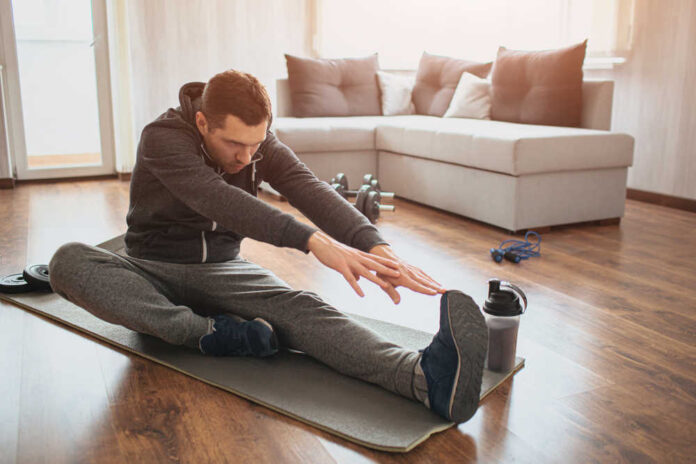
If you are an avid runner or someone who participates in other high-impact sports or activities, you may be familiar with the painful aches that can come from shin splints.
Shin splints are a common repetitive stress injury that occurs when your shinbone and the attached muscles and tendons become overworked and strained.
While rest and ice are usually the best treatment for shin splints, some stretches can help alleviate pain and aid the healing process.
Wall Push Stretch
- Stand facing a wall, approximately 3 feet away.
- Step one of your feet forward and place your hands on the wall at chest height.
- With your forward leg bent and your back leg straight, lean into the wall.
- You’ll feel the stretch in the calf muscle of your back leg.
- Hold for 20 to 30 seconds, then repeat on the other side.
Toe Raise Stretch
- Stand with your feet shoulder-width apart.
- Raise up onto your toes.
- Slowly lower back down, letting your heels touch the ground.
- Repeat 10 to 15 times.
Heel Drop Stretch
- Stand (safely) on the edge of a stair step or curb, with your heels hanging off the edge.
- Hold a railing or something sturdy to maintain your balance.
- Position yourself on the step so that your heels hang off.
- Slowly lower one heel below the level of the step.
- Hold the stretch for 15 to 20 seconds.
- Raise your heel back up and lower your other heel.
- Repeat as needed.
Wall Calf Stretch
- Stand facing a wall, a foot or two away.
- Place one foot forward so your toes are on the wall and your heel is on the ground.
- Lean forward to feel the stretching in your calf muscle.
- Hold for 20 to 30 seconds, then switch sides.
Preventing Shin Splints
These stretches can help relieve the pain that has already set in, and they can also help strengthen the muscles and tendons around your shin to help prevent shin splints from happening in the first place.
To further help prevent shin splints, make sure you are wearing proper footwear for your activities. You might need more cushioning and support for high-impact activities like running, or you may need orthotics to help correct any imbalances in your feet.
It will also be helpful to reassess and adjust your posture and form for your activities. If you’re feeling the pains of shin splints, you may be stepping too hard or flexing your foot at an unnatural angle. Modify your movements to help reduce the strain and impact on your shins.
If the pain doesn’t go away or gets worse, see your doctor or a physical therapist for further examination and treatment options.






















